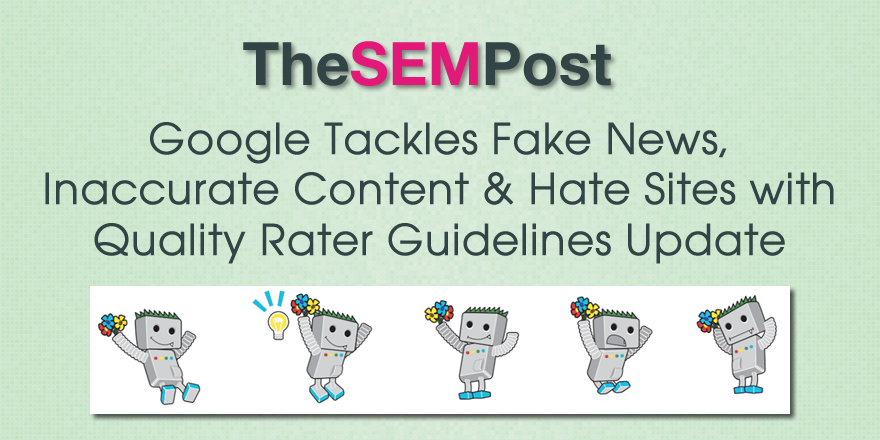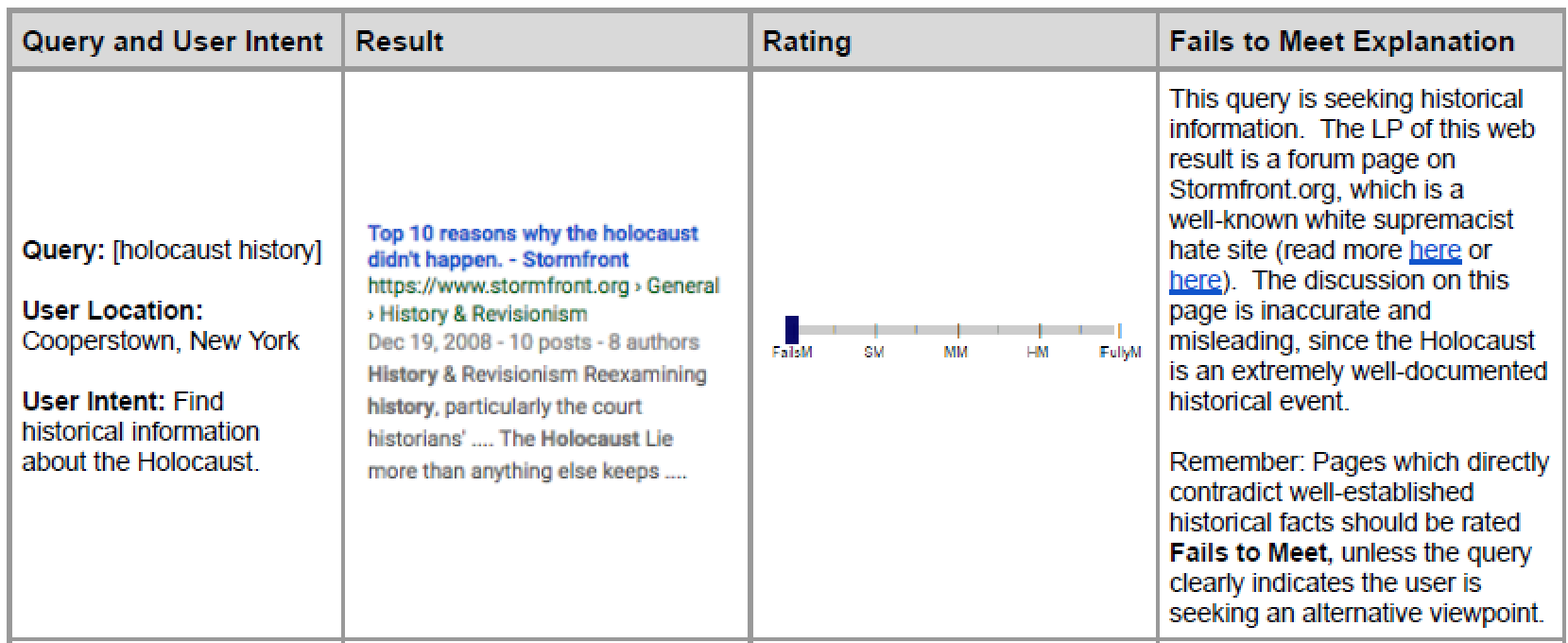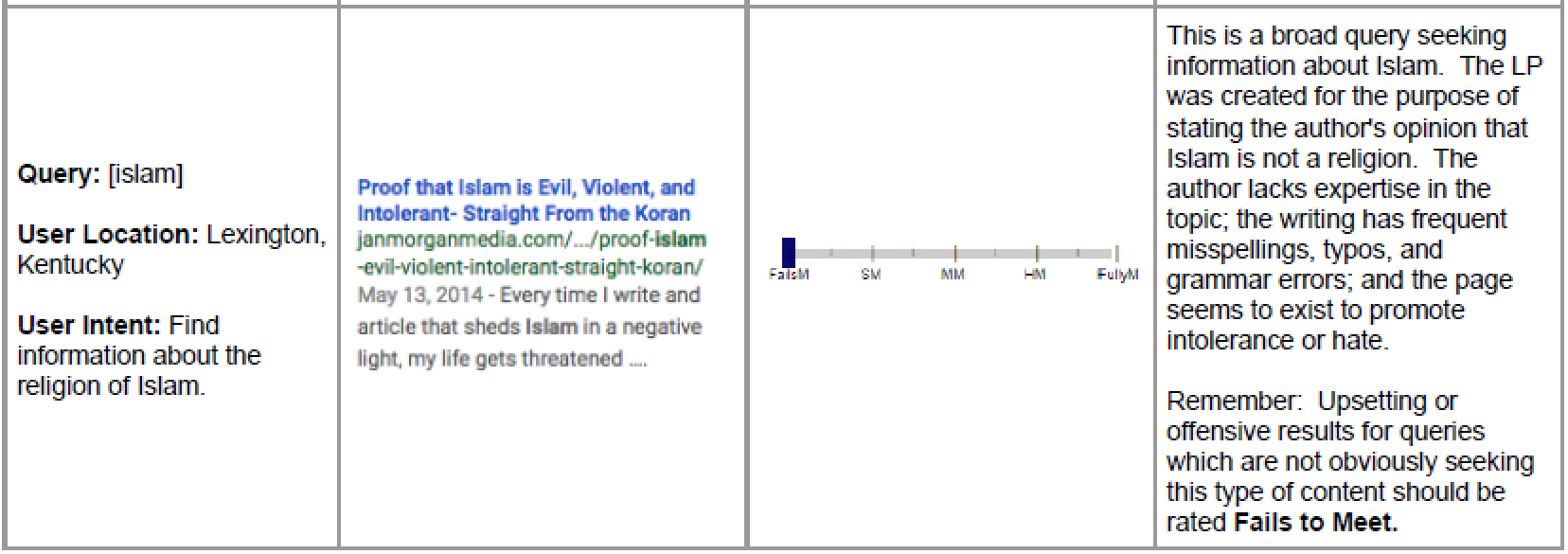 It seems that it isn’t just users who are annoyed at the prevalence of fake news in search results and social media these days. Google has made some new and very specific changes to their Quality Rater Guidelines to target fake news, as well as other types of sites including hate sites, “monstrously inaccurate” information sites such as science medical denials, other types of sites that are offensive to searchers.
It seems that it isn’t just users who are annoyed at the prevalence of fake news in search results and social media these days. Google has made some new and very specific changes to their Quality Rater Guidelines to target fake news, as well as other types of sites including hate sites, “monstrously inaccurate” information sites such as science medical denials, other types of sites that are offensive to searchers.
Additions to Low Quality
Specifically, Google is designating the following as low quality:
- Sites that mimic other well known sites, including news sites
- Sites that present themselves as news sites but contain factually inaccurate content meant to benefit a “person, business, government, or other organization politically, monetarily or otherwise”
- Sites that deliberately misinform or deceive users by presenting factually inaccurate content
- Sites with unsubstantiated conspiracy theories or hoaxes, presented as if it were factual
- Pages or websites presenting dubious scientific facts
- Site that promote hate crimes or violence against a group of people.
Impact of Fake News in Google Search Results
I talked with Paul Haahr, a ranking engineer at Google, about the quality rater guideline changes and he revealed an interesting statistic about “fake news” type of results. Only a very small percentage of traffic ends up seeing these types of results in the search results. According to Haahr, only a very small fraction of traffic is affected, as only 0.1% of traffic touches these areas. This is a surprisingly small number which seems disproportionate to the amount of publicity these types of results get in the news media.
He also said because these types of sites are popping up more, it was why the guidelines were updated to reflect this.
News Now Considered Your Money or Your Life
One of the more important changes for news sites are now considered to be “Your Money or Your Life” – these are the types of sites that are held above and beyond merely high quality, as they impact a person’s wellbeing, health or life. And they also require the highest E-A-T (expertise, authoratativeness, and trustworthiness).
- High quality news articles should contain factually accurate content presented in a way that helps users achieve a better understanding of events. Established editorial policies and review processes are typically held by high quality news sources
- High quality information pages on scientific topics should represent wellestablished scientific consensus on issues where such consensus exists.
It is also clear that Google wants raters to have clear guidelines on rating this type of content low – without the explicit instructions that fake news and hate sites are considered low quality, the accuracy of any algo changes they test with the raters might not be that clear.
Using New Guidelines to Test New Algos
Haahr said that they needed to make these specific changes to the guidelines in order to have training data from the raters. And the need for training data would mean they are looking for ways to algorithmically detect and downrank sites that fall into the categories of fake news, hate sites or other sites with dubious and unbacked theories or claims. Once raters know these sites should always be marked as low quality, they can then test algo changes targeting it specifically with the quality raters.
With the changes being the addition of hate crimes and hate sites targeted to any specific group, Haahr said that raters do not have to rate any of these types of sites. They also tried to be thoughtful of the examples they used in their guidelines to avoid upsetting anyone.
One of the new examples added includes the often cited Stormfront example:

Also added is an example of a hate site:

Changes to Google Webmaster Guidelines?
I also asked Haahr if we would expect these changes to filter through to the regular webmaster guidelines. Because the amount of traffic impacted by these quality rater changes are so small, he doesn’t anticipate changes being made to the regular guidelines. He did say that it is possible Google News may do something with their guidelines.
Lastly, clickbait is another thing targeted, particularly clickbait titles that don’t deliver within the content. Google said they want to make sure that site owners are considering their titles and are delivering the content promised in those titles.
For those looking for the complete rundown of changes, you can view my complete breakdown of all the quality rater guidelines here.
Kenny says
I for one, am extremely glad to see this. There is much power to be had in manipulating the users with fake news… so glad to see “doesn’t meet expectations” guidelines. good on Google for this one.